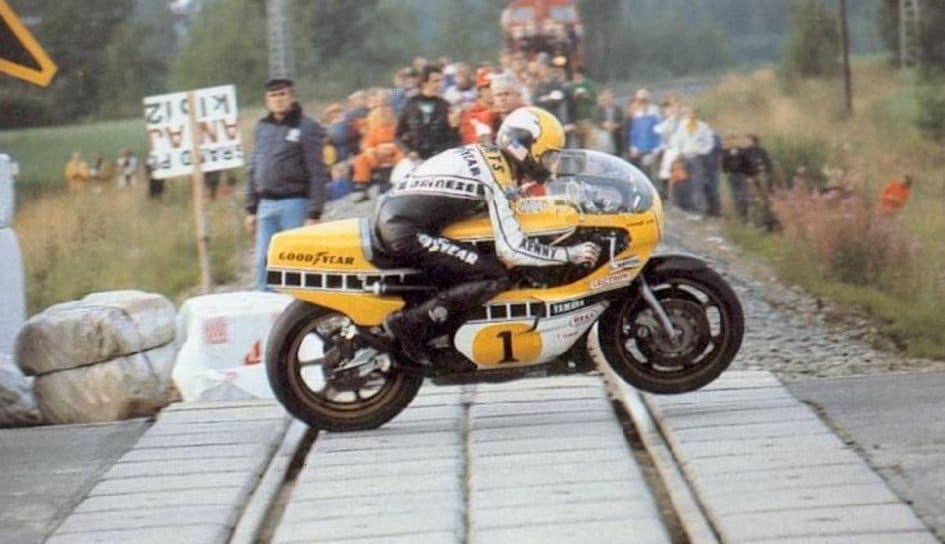In this new series of articles, of which we do not yet know the exact number, we will try to retrace what led to the creation of the IRTA (International Racing Team Association), one of the four entities which today manage today MotoGP with Dorna, the FIM and the MSMA.
During the 70s and 80s, motorcycling competitions experienced a particularly prosperous period summed up under the name Continental Circus and characterized among other things by the plethora of pilots who then lined up on the starting grids.
But behind the extraordinary exploits achieved by these modern-day champions were often, far too often, hidden tragedies which left the paddock in mourning.
When was the one that could mark the start of a new era? Difficult to say because motorcycling competition has always included its share of risk and its quota of fatal accidents, but let's say that Monza 1973, with the massacre which cost the lives of Jarno Saarinen et Renzo Pasolini undoubtedly made a strong impression...
The shock at Monza, with its 19 250cc riders involved, was immense. Monza was then one of the fastest circuits in the world, made up of five large curves and long straights. No chicanes, no hairpins, but safety rails less than five meters from the track.
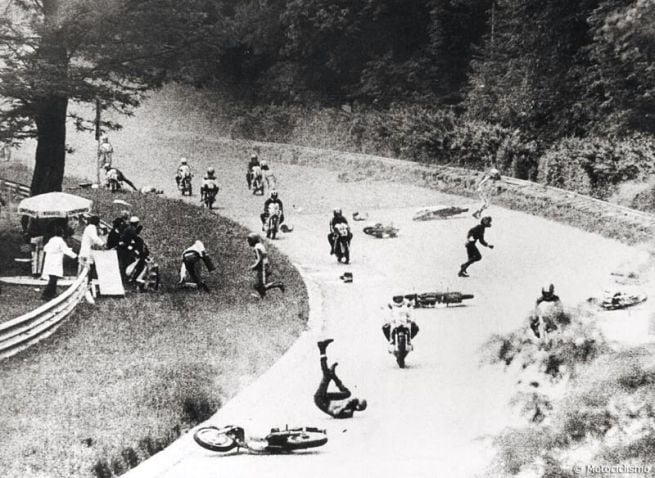
" Never again " it was said at the time, and some measures were taken, such as the creation of the reconnaissance tour before departure and increased protection of the rails, then their gradual elimination, but it took time, a lot of time, and only the creation of modern circuits made it possible to do without natural circuits and to increase the level of safety.
At that time, drivers, private or professional, had only two omni-powerful interlocutors, the FIM and the race organizers, both caring very little about the safety of the drivers and the financial or practical conditions in which the latter were running: the show was doing well, so either you took part in it, or you went elsewhere…
As a result, the world championship was held on many circuits offering no safety other than a few bales of straw placed here and there to avoid tree trunks, telephone poles, sidewalks and potholes, when they were not railway tracks… like Imatra, Opatija, Nogaro, Brno, the old Nürburgring, etc.
The legendary film “ The Iron Horse”, by Pierre-William Glenn, is a perfect example with the explanations of the late Michel Rougerie:
More than dangerous circuits, paddock without any basic facilities, ridiculous starting bonuses, over the years, discontent continues to grow among drivers, including among private drivers who, moreover, sometimes do not know of a day to the other if they will be able to run while they are there…
We had to wait until 1979 and the domination of Kenny Roberts in the premier category so that he can really take things in hand, with Barry Sheene (representing riders since 1978) to a lesser extent, and is starting to seriously complain. Race after race, tension rises between the American and the FIM, the first ending up announcing its desire to create a new championship, the World Series, with only 250cc and 500c, the second responding by not counting the points scored by the Yamaha rider before sometimes going back.
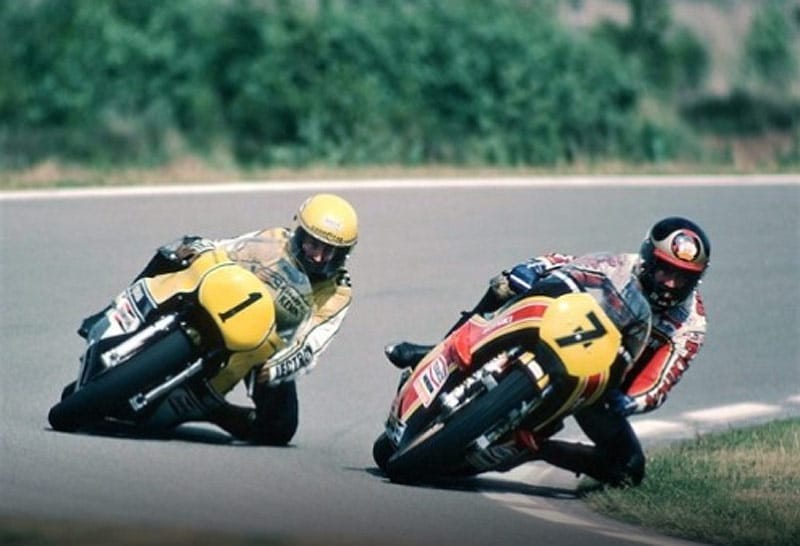
It all started in the winter of 78/79 when Kenny Roberts suffers back and spleen injuries while testing his new Yamaha 0W45 in Japan.
“I remember lying there, thinking " I'm screwed ". My back was sore. For three days, I thought I was going to die. They didn't give me painkillers because it would have slowed down the healing. Then they said “We are going to operate on you”. I said “No way, I’m going back to America.”They said : “You won’t make it. » Well, I was dead because from what I saw, they didn't have good medical facilities. I remember putting the gas mask on to fall asleep and think “That’s it, I won’t wake up”. I was very surprised when I woke up. »
His injuries caused him to miss the Venezuelan Grand Prix before winning the second round in Austria, followed by a second place in Germany, and another victory in Italy, at the Grand Prix of Nations in Imola. At the following Grand Prix, in Spain, the organizers refused to pay him his starting bonus (a classic in Spain!), knowing that King Kenny must race to maintain his lead. The "yellow dwarf" wins the race but does not accept the winner's trophy, telling FIM president Rodil del Valle: “No, keep it.” Maybe you can sell it. I understand you need money. » The FIM first withdraws his points before granting a reprieve.
At the Belgian Grand Prix in July, the reigning world champion and Virginio Ferrari, the championship leader, refuse to race on the new layout of the Spa circuit whose surface is soaked in diesel. They rallied 80 regular Continental Circus drivers to their cause and only a few second-rate opportunistic drivers agreed to take the start. Once again, the FIM responds by first suspending Roberts et Ferrari before replacing this suspension with a fine. Barry Sheene requests the cancellation of the points but the FIM decides that the race would count for the championship.
The event, however, highlights the particular animosity between Kenny roberts and the FIM regarding safety and departure bonuses, despite, or because of, the work carried out by Barry Sheene in this sense since 78: safety issue, the Briton had requested that the presence of a helicopter be obligatory at each GP and had also raised the questions of starting bonuses which had not been increased over the last three years and no were not always paid.
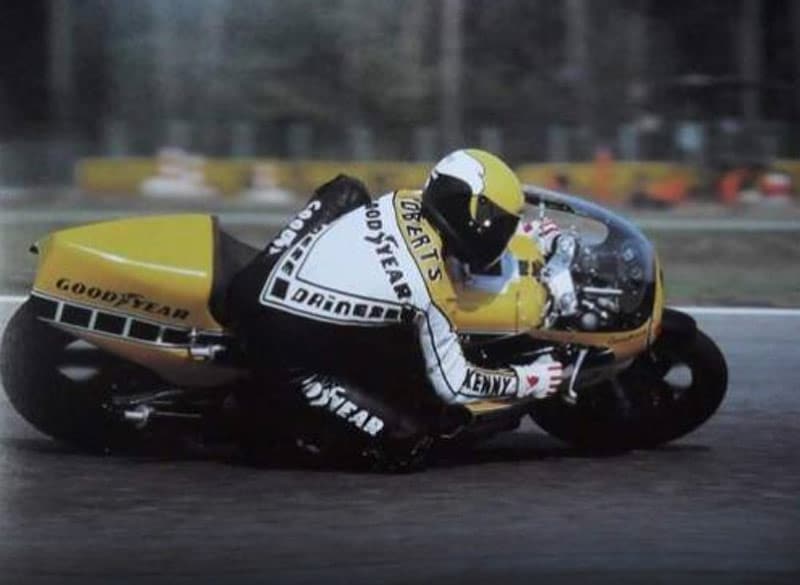
Three Grands Prix later, on August 11 at Silverstone, a group of drivers led by Kenny Roberts, Barry Sheene, Virginio Ferrari, Wil Hartog et Johnny Cecotto calls the press to a conference to announce his intention to forgo the 1980 World Championship and to create a championship organized and managed by the drivers themselves: the World Series.
It was a real revolution and the FIM, which saw its monopoly called into question, reacted firmly by starting by threatening, first of all the pilots who would lose their FIM license, but above all, through the national federations, the organizers likely to host World Series races by threatening them with suspension from the organization of FIM competitions.
But given the determination of the riders and the importance of the names involved, the FIM announced the increase in start and finish bonuses, with compensation for non-qualified riders, during its Congress held in Montreux (Switzerland) in october.
The American and his Yamaha finally won a new 500cc title in front of a host of Suzukis, but he did not budge and intended to definitively abandon the Grands Prix the following year, in favor of the World Series, the competition that he intends to create with the help of the American lawyer Mark McCormack of IMG (International Management Group) to break the FIM monopoly!
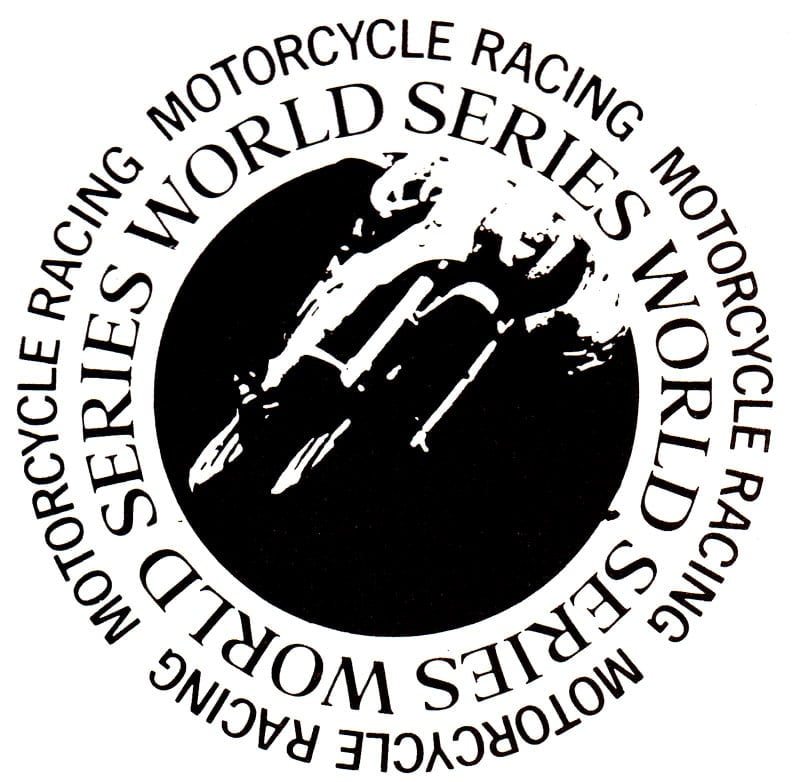
The project was officially presented to the press on December 14, 1979 in London by Barry Coleman, deputy director of World Series Racing Ltd., in the presence of Kenny Roberts and Barry Sheene.
- The World Series will have two categories: F-1 (500cc) and F-2 (250cc)
- A provisional calendar has been announced, including 8 dates at the circuits of Imola, Donington, Laguna Seca, Le Mans, Monza, Zandvoort, Salzburg and Zolder. We also talk about Mexico and Japan.
- The drivers' field will be sold to the organizers for the sum of 800 francs, thus allowing drivers, particularly private drivers, to be less dependent on sponsors. Any driver entered, for the simple fact of finishing in the first twenty, will have a guaranteed income of one thousand dollars.
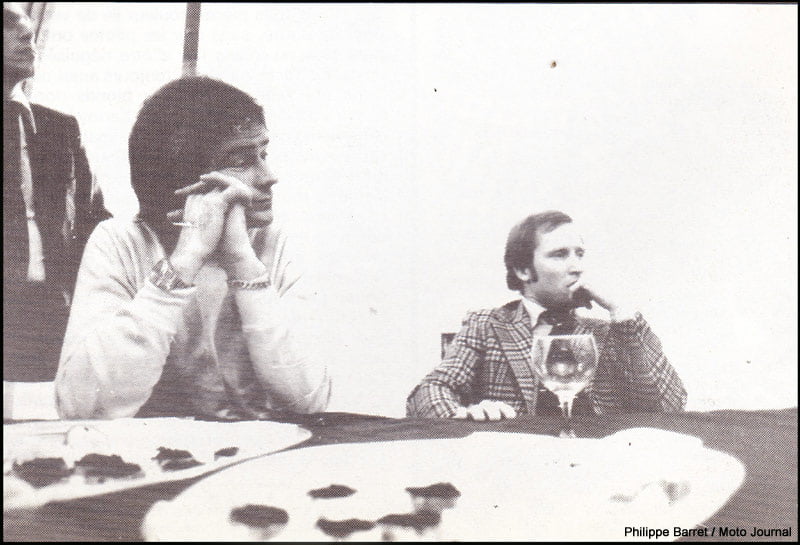
These broad guidelines, however, appear as ambitious as they are vague and it will subsequently turn out that Kenny Roberts was on the one hand not really aware of the scale of such a project, and on the other hand that he had been somewhat led along, or overwhelmed, by the people who were supposed to help him.
At the start, around forty pilots including Kenny Roberts, Barry Sheene, Virginio Ferrari, Kork Ballington, Jon Ekerold, Patrick Fernandez, Gregg Hansford, Wil Hartog, Marco Lucchinelli, Randy Mamola, Patrick Pons, Christian Sarron, Freddie Spencer and Franco Uncini had declared themselves in favor of the World Series.
Among manufacturers, Yamaha, Suzuki and Kawasaki were receptive to new proposals due to the interest of their riders, most of whom had signed for the World Series. Conversely, Honda was the only brand which from the first moment was on the side of the FIM and its president, Nicolás Rodil del Valle.
As the weeks went by, the men of IMG realized that the undertaking was much more difficult than expected, and the project gradually fell apart with circuits which did not sign and drivers who gradually withdrew, particularly after the defection of Wil Hartog, tired of the vagueness of the project and which brings with it Jack Middelburg, Boet Van Dulmen et Graziano Rossi.
Ultimately, the project failed and, in January, Barry Coleman admits World Series will not be held in 1980 : “We ran out of time and decided to wait another year before starting the World Series. But we are in a very strong position. We forced the FIM to make many changes to the bonus system, this which she would not have considered if there had not been the alternative offered by the World Series. We lost a battle, but not the war. »
Kenny Roberts remembers, in 2017: “The old promoters and the FIM treated us like shit. It was just bad because they had everyone by the balls. We got close enough to creating the World Series to scare them. After that it was like heaven. While we couldn't talk to promoters about safety, we turned the situation around. And they raised the premiums 300%, and everyone knew what they were paying, so you didn't have to play with the promoter's balls to get $500 more. All the mafia things are gone. Now it's easy, the riders will talk to Carmelo (Ezpeleta, CEO of Dorna, the current promoter of MotoGP) and it's settled. At the time, my god, it was a nightmare! Many people didn't know how successful it was. I didn't do it for money, I had more to lose than anyone else. I did it because I thought it was good, because the sport needed it. »
Despite his previous statements (“under no circumstances will I participate in a Grand Prix, and if by bad luck the World Series cannot take place, I will stay in the United States”), Kenny roberts returned to the Grand Prix in 1980, but he had a big problem…
“I had so much invested in the World Series: money, time, effort, meeting Bernie and all these people. So when we came back to the competition, in Misano, I was ready to drink. After the race they gave me champagne on the track and I rode back to the hotel on the roof rack of the car. The guys tried to get me off the roof but they couldn't. »
The Yamaha International rider won a new title in 1980 but did not give up defending the interests of the riders. The future will show…
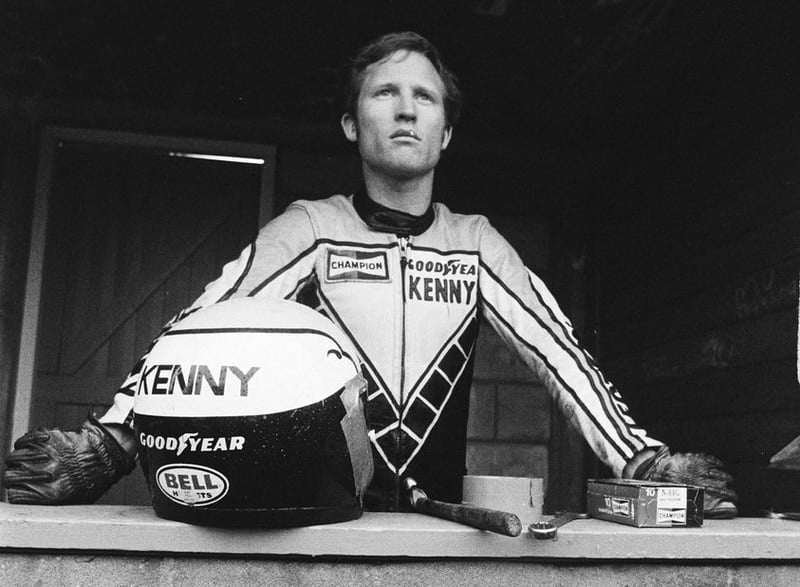
Credit: FIM, Mat Oxley, Moto Journal, Facebook, etc.


